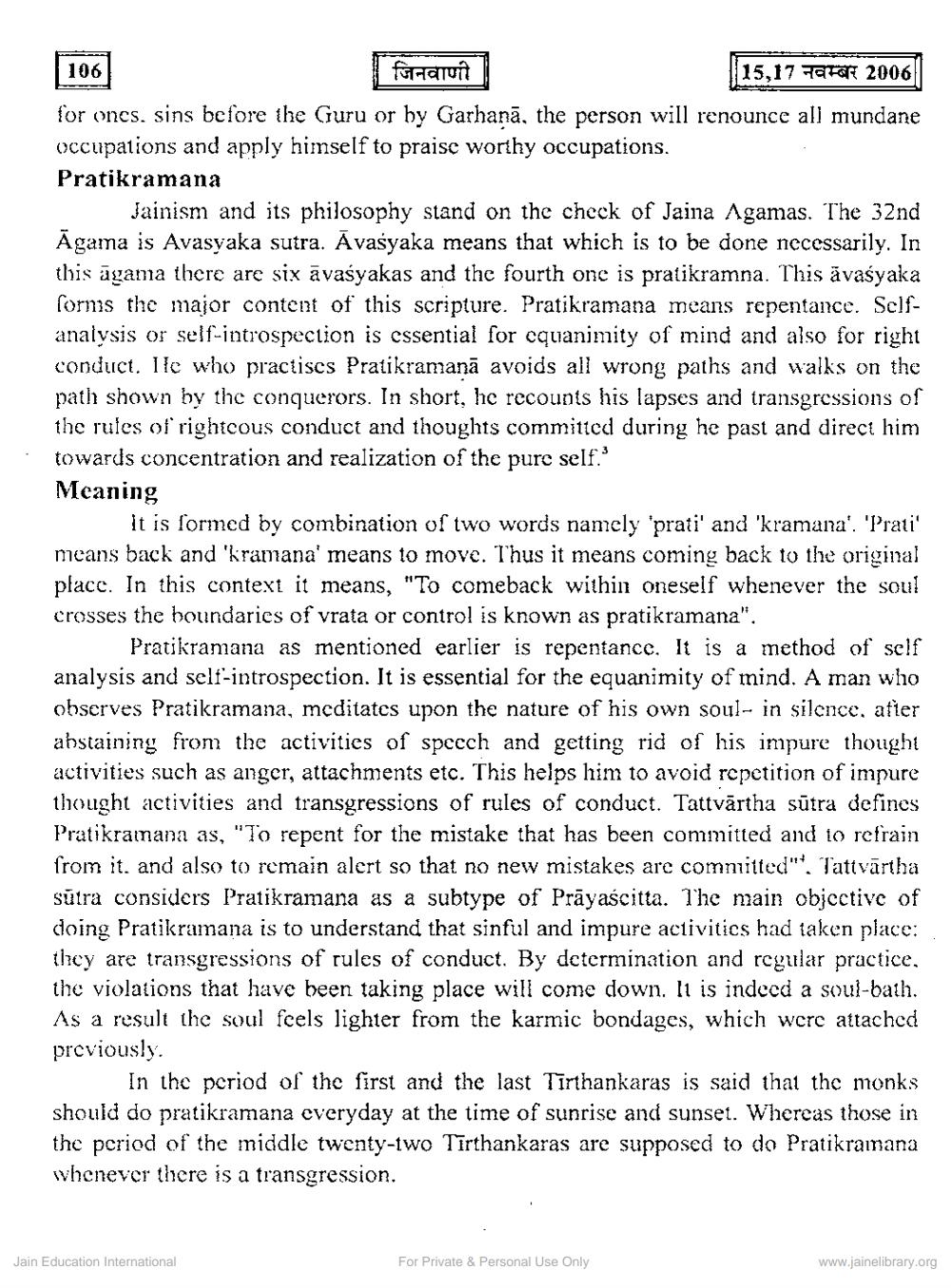Book Title: Pratikramana an Austerity for Self Purification Author(s): Ashok Kavad Publisher: Z_Jinavani_002748.pdf View full book textPage 2
________________ 106 ad Fortement 15,17 HAFA 2006 for ones. sins before the Guru or hy Garhanā, the person will renounce all mundane occupations and apply himself to praise worthy occupations. Pratikramana Jainism and its philosophy stand on the check of Jaina Agamas. The 32nd Āgama is Avasyaka sutra. Avasyaka means that which is to be done necessarily. In this agama there are six avasyakas and the fourth one is pratikramna. This āvasyaka fornis the major content of this scripture. Pratikramana means repentance. Selfanalysis or self-introspection is essential for cquanimity of mind and also for right conduct. Ile who practiscs Pratikramanā avoids all wrong paths and walks on the path shown by the conquerors. In short, he recounts his lapses and transgressions of the rules of rightcous conduct and thoughts committed during he past and direct him towards concentration and realization of the pure self." Meaning It is formed by combination of two words namely 'prati' and 'kramana'. 'Prati' means back and 'hramana' means to move. Thus it means coming back to the original place. In this context it means, "To comeback within oneself whenever the soul crosses the boundaries of vrata or control is known as pratikramana". Pratikramana as mentioned earlier is repentance. It is a method of self analysis and self-introspection. It is essential for the equanimity of mind. A man who obscrves Pratikramana, meditates upon the nature of his own soul- in silence, after abstaining from the activities of specch and getting rid of his impure thought activities such as anger, attachments etc. This helps him to avoid repetition of impure thought activities and transgressions of rules of conduct. Tattvārtha sūtra defines Pratikramana as, "To repent for the mistake that has been committed and to refrain from it, and also to remain alert so that no new mistakes are committed"t. Tattvärtha sūtra considers Pratikramana as a subtype of Prāyaścitta. The main objective of doing Pratikramana is to understand that sinful and impure activities had taken place: they are transgressions of rules of conduct. By determination and regular practice, the violations that have been taking place will come down. It is indeed a soul-bath. As a result the soul feels lighter from the karmic bondages, which were attached previously In the period of the first and the last Tīrthankaras is said that the monks should do pratikramana cveryday at the time of sunrise and sunset. Whereas those in the period of the middle twenty-two Tirthankaras are supposed to do Pratikramana whenever there is a transgression. Jain Education International For Private & Personal Use Only www.jainelibrary.orgPage Navigation
1 2 3 4 5
